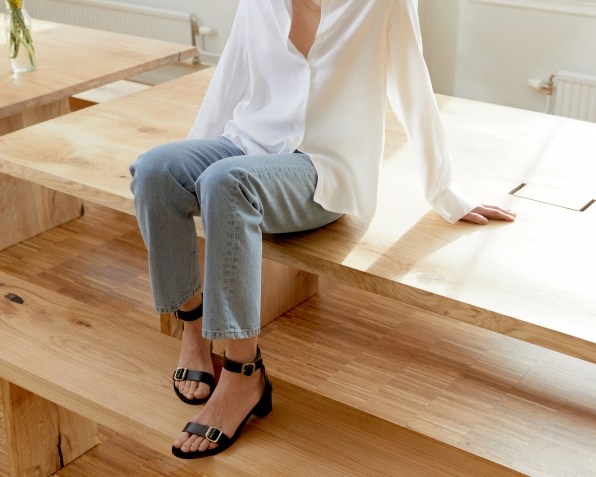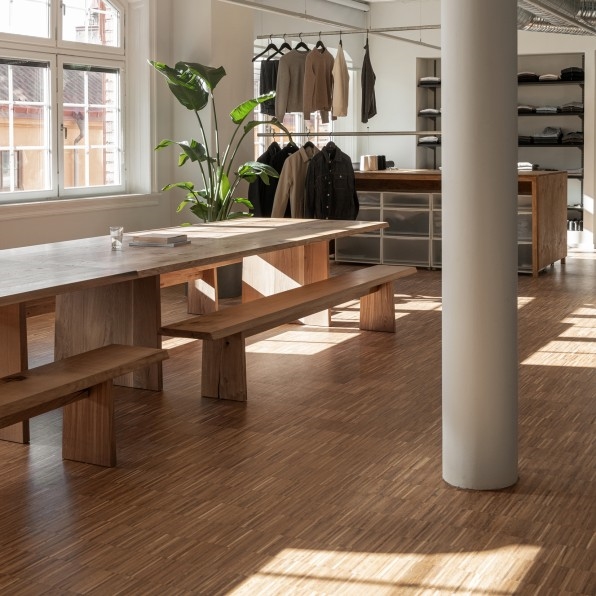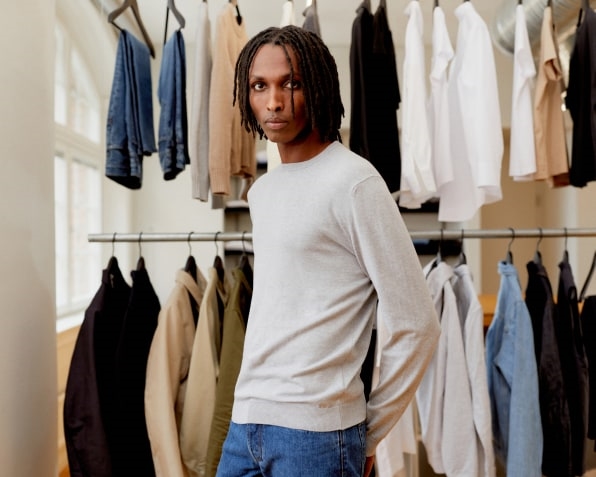Two years in the making, these jeans are the antidote to fast fashion
When Levi Strauss invented the blue jean in 1873, it was a feat of design. Made from copper rivet-reinforced denim, they could withstand years of manual labor, while still projecting an air of effortless cool. But today, jeans are just another example of disposable fast fashion. Brands like Shein and H&M crank out cheap, trendy pairs every season, designed to be thrown out within months—contributing to the 2 billion pairs churned out every year.

What would it take to turn back the clock and return to Strauss’ original vision for his iconic pants? Asket, a Swedish startup founded in 2015, is on a mission to find out. While fashion brands typically design new collections every season, Asket (the Swedish term for “ascetic”) has created one permanent collection of 30 classic, versatile garments that the company promises will last years of wear and never be phased out. This approach goes against how the fashion business has operated for the last half century, but Asket is proving there’s money to be made with this radical model: It’s profitable, generating $10 million in sales last year. It’s just opened a stunning new headquarters in Stockholm, too.

As Swedes, Asket cofounders August Bard Bringéus and Jakob Dworsky grew up with a sense of pride in Ikea and H&M, Swedish mega-brands that pioneered the business model of selling cheap, trendy goods to the masses. But by the time they attended the Stockholm School of Economics a decade ago, the pair had become disillusioned with these companies, which helped create the culture of overconsumption that is accelerating climate change.

“Fashion design is about planned obsolescence,” says Bringéus. “You’re creating something with a due date. When it’s on the shelf, your designers are already working on what’s coming out in two years. And you’re telling your customers what you bought (August 26, 2022) is no longer socially acceptable to wear next year.”

Asket turns this logic on its head. The brand has curated a permanent collection of men’s and women’s clothes that the founders believe will not go out of style. To do this, they’ve studied the history of fashion to identify garments that have stood the test of time. “There’s the same formula behind every product,” says Bringéus. “It always starts with some kind of functional wear: The T-shirt was a military undergarment, the polo was a tennis shirt with a collar to protect you from the sun, the Oxford shirt was for polo players in British universities who wanted a breathable shirt. It becomes part of subculture, then mainstream, then a wardrobe essential.”

Asket takes a long time to design each garment since it will remain in the collection forever. It took more than two years for it to develop its jeans, for instance. The brand began by asking 20 independent product testers to wear the jeans for 9 months to test the quality of the fabric. Then, it invited 300 customers to preorder the jeans and provide detailed feedback about fit. Through this process, Asket’s designers realized that they needed to adapt the jeans to two different body types—one slimmer than the other—to achieve consistent fit. Only after these adjustments did the brand scale up to full production. Three years later, Asket has sold 20,000 pairs of these jeans, which make up 15% of the company’s sales. The denim testing program also became the model for every garment introduced into the permanent collection—including Asket’s seven-piece women’s collection, which launched last year.

Bringéus says that each garment his company sells is meant to withstand at least five years of constant, rigorous use. This accounts for the brand’s prices, which are notably higher than fast fashion, but not quite luxury: T-shirts cost $45, Oxford shirts cost $140, and jeans cost $155. The brand sells cleaning products designed to extend the life of a garment and will send spare parts—like buttons and thread—for repairs. (When the garments eventually do reach the end of their life, customers can send them back to Asket, which will recycle the materials.) But this approach means that the customer has no reason to come back season after season to update their closet, which is how most fashion brands make their money.
“We put all our efforts into getting new people to try us out,” says Bringéus. “We don’t actively try to get our existing customer to buy things they don’t need.”
(42)


